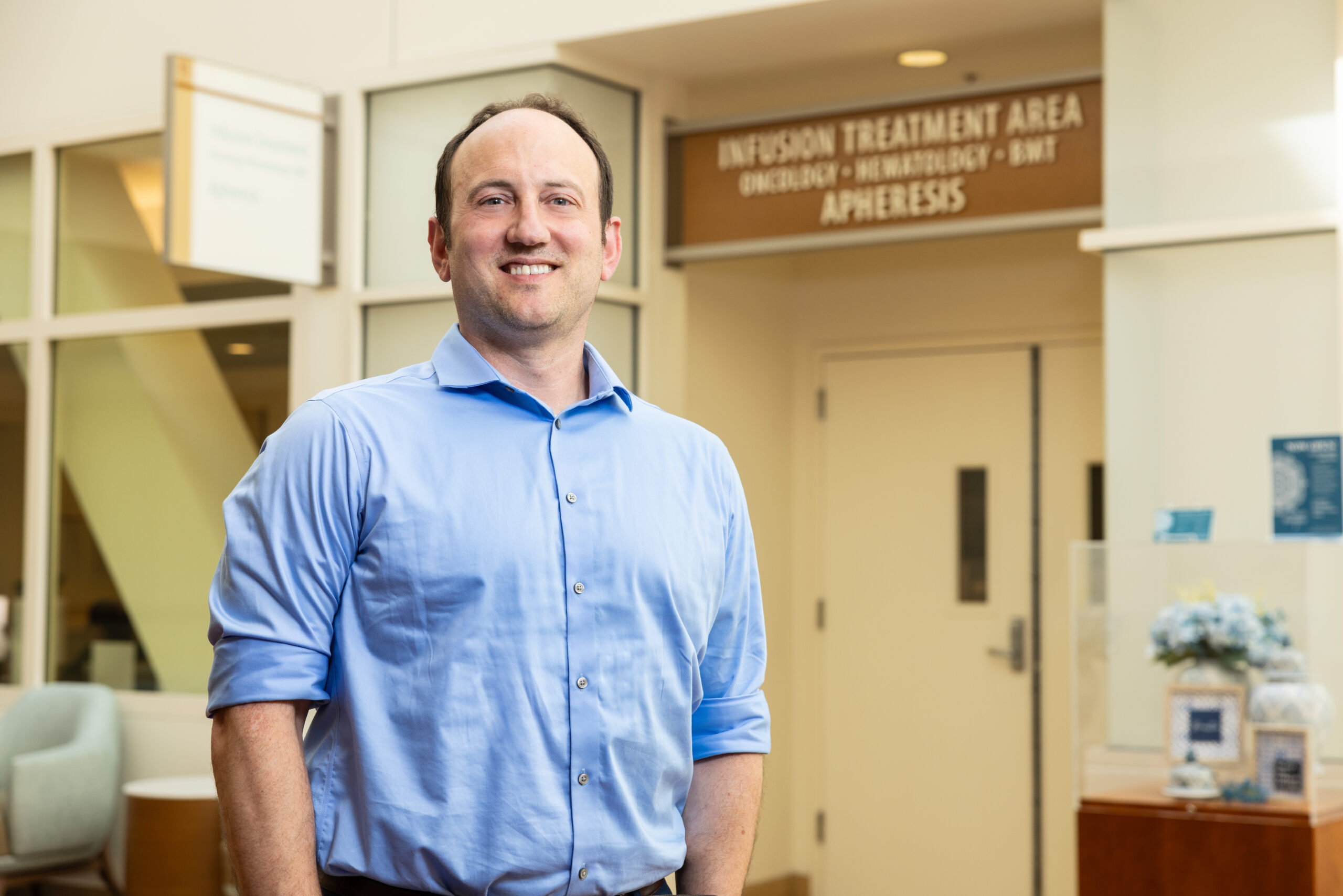
Pioneering New Frontiers in Cancer Therapy: Stanford’s Breakthrough With CD22 CAR T Cells
#Methods
T cell attacking a cancer cell. Meletios Verras/Shutterstock.com
Most of the lymphoma patients who agreed to a new, experimental therapy at Stanford were told that they had only months to live. Enrolling in a clinical trial – in which their immune cells would be removed from their bloodstream, grown and altered in a lab, and then infused back into their body – was a last resort. So when more than half of the patients had a complete response, with their tumors becoming undetectable, even the researchers running the trial were surprised.
“These are patients who have really run out of options. They have huge tumors that are not responding to other therapies,” says Matthew Frank, MD, PhD. “So to have durable responses in this very high-risk population really blew us away.”
Today, when people with large B-cell lymphoma don’t respond to chemotherapy, they often receive CAR T-cell therapy, in which their immune cells are reengineered to recognize and destroy cancer cells. But the standard CAR T-cell therapy, which makes immune cells target a protein called CD19, does not always work.
Since 2018, Stanford researchers and clinicians have been working to make a CAR T-cell therapy that attacks a different protein found in some cancer cells, CD22. They began with basic research to design the CAR T cells, followed by studies on how to grow enough copies of the cells to make effective treatments. Then, they brought the therapy to patients.
The results of that phase I trial – which included 38 patients at Stanford whose tumors had not responded to CD19-directed CAR T-cell therapy – were published in The Lancet. Sixty-eight percent of the patients saw their tumors shrink, and 53% had a complete remission. Frank was one of the lead authors of the paper, along with David Miklos, MD, PhD, chief of the Blood and Marrow Transplantation and Cellular Therapy Division.
“We think this study is a big deal because it is so unusual for a single academic institution to carry a trial completely from concept through basic research and then patient treatment,” says Miklos. “We showed that this cell therapy is safe and effective, and we did it without venture capital funding or pharmaceutical company support, because Stanford Medicine funded the cell manufacturing costs.”
Stanford was able to carry out the full breadth of the work because of close collaboration between basic researchers and clinicians, says Miklos.
“Stanford is a nexus for cell therapy research and treatment right now; this is where we can bring it all together,” he says. “We can develop the preclinical ideas, we have the technical capabilities to produce cells, and we have dedicated clinicians who bring the therapy to patients.”

“Stanford is a nexus for cell therapy research and treatment right now; this is where we can bring it all together. We can develop the preclinical ideas, we have the technical capabilities to produce cells, and we have dedicated clinicians who bring the therapy to patients.”
– David Miklos, MD, PhD
Matthew Frank, MD, PhD
Unrivaled Manufacturing Ability
One of the key players in the collaboration to develop and study CD22-directed CAR T-cell therapy was the Laboratory for Cell and Gene Medicine, which houses a state-of-the-art cell manufacturing facility that can grow the cells isolated from patients.
“Our manufacturing facility provides the opportunity for research to move smoothly through to patients,” says Steven Feldman, PhD, the laboratory’s scientific director. “We have control over the process, the infrastructure, and the data.”
When many academic medical centers study new cell therapies, they do so in collaboration with pharmaceutical companies. This means the data they collect on patients is sent back to the company for analysis, giving the clinicians themselves little control over the direction of the research.
Thanks to the manufacturing capabilities of the Laboratory for Cell and Gene Medicine, however, Stanford researchers and clinicians controlled every aspect of the CD22-directed CAR T-cell therapy trial. This sped up the process of innovation, and it continues to give researchers the ability to ask new questions about the therapy with the data they have already collected.
“We’re still analyzing lots of the samples we collected, to get some insight into why the therapy worked better for some patients than others,” says Frank. “That’s giving us a much richer understanding of how we make this go even better the next time.”
In the wake of the phase I trial, Frank is already helping lead a phase II trial at institutions around the country. He is also studying the use of the therapy in other cancer types and in combination with other CAR T-cell products. The Laboratory for Cell and Gene Medicine is producing the cells for all the avenues of research.
“Now that we have this infrastructure to run a trial, we can do this for anything,” says Feldman.
